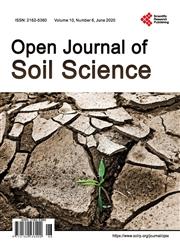Forest Soil Management: A Mexican Experience
引用次数: 4
Abstract
Forests improve the livelihoods and resilience of communities in diverse ways. In particular, soils provide important environmental services for communities in addition to performing many essential ecological functions in forest ecosystems, such as nutrient uptake, organic matter decomposition, water storage, and provision of anchorage for plant growth. The sound management of forest soils, although often disregarded, is a key element of sustainable forest management. From 2002 to 2016 the Forest Soil Conservation and Restoration Sub-Program was designed and implemented by the National Forest Commission (CONAFOR) in Mexico. Forests in Mexico have high biological diversity and are often owned, governed, and managed by communities or, in some cases, community forestry is practiced. Despite the importance of periodic monitoring to ensure that policies are both effective and suitable for diverse conditions and decision making, the policies implemented by this program were not evaluated during its years of operation. Therefore, in the present study, we aimed to identify the deficiencies of this policy as well as opportunities based on a review of the official information available on the Forest Soil Conservation and Restoration Sub-Program of CONAFOR during the 2002-2016 period and interviews with key informants. In addition, we aimed to highlight experiences that may be useful for similar soil conservation policies in tropical forest regions. The identified limitations ranged from conceptual problems such as policy weakness and lack of understanding of local drivers of soil degradation to an overly rigid implementation of soil conservation measures across diverse forest ecosystems and socio-ecological contexts. These deficiencies had several unintended outcomes: perhaps the most relevant was the inability of forest communities to build capacities for soil conservation. Another important limitation was the complete lack of monitoring of the program and its outcomes, which could have prevented its poor results. Finally, a lack of transparency in the distribution and determination of funding was noted. In conclusion, the hierarchical approach of this policy appears to have compromised its long-term efficacy.森林土壤管理:墨西哥的经验
森林以多种方式改善社区的生计和复原力。特别是,土壤除了在森林生态系统中发挥许多重要的生态功能外,还为社区提供重要的环境服务,如养分吸收、有机物分解、蓄水和为植物生长提供锚固。森林土壤的健全管理虽然经常被忽视,但却是可持续森林管理的一个关键因素。2002年至2016年,墨西哥国家森林委员会(CONAFOR)设计并实施了森林土壤保护和恢复子计划。墨西哥的森林具有高度的生物多样性,通常由社区拥有、管理和管理,或者在某些情况下,实行社区林业。尽管定期监测的重要性在于确保政策有效且适合不同的条件和决策,但该计划实施的政策在其运行的几年中没有得到评估。因此,在本研究中,我们旨在根据对2002-2016年期间CONAFOR森林土壤保护和恢复子计划的官方信息的审查以及对关键信息提供者的采访,确定该政策的不足之处以及机会。此外,我们旨在强调可能对热带森林地区类似的土壤保护政策有用的经验。已确定的局限性包括概念问题,如政策薄弱和对当地土壤退化驱动因素缺乏了解,以及在不同的森林生态系统和社会生态环境中过于严格地执行土壤保护措施。这些缺陷产生了几个意想不到的结果:也许最相关的是森林社区无法建立土壤保护能力。另一个重要的限制是完全缺乏对该计划及其结果的监测,这本可以防止其糟糕的结果。最后,有人指出,在资金分配和确定方面缺乏透明度。总之,这项政策的分级方法似乎损害了其长期效力。
本文章由计算机程序翻译,如有差异,请以英文原文为准。
求助全文
约1分钟内获得全文
求助全文

 求助内容:
求助内容: 应助结果提醒方式:
应助结果提醒方式:


